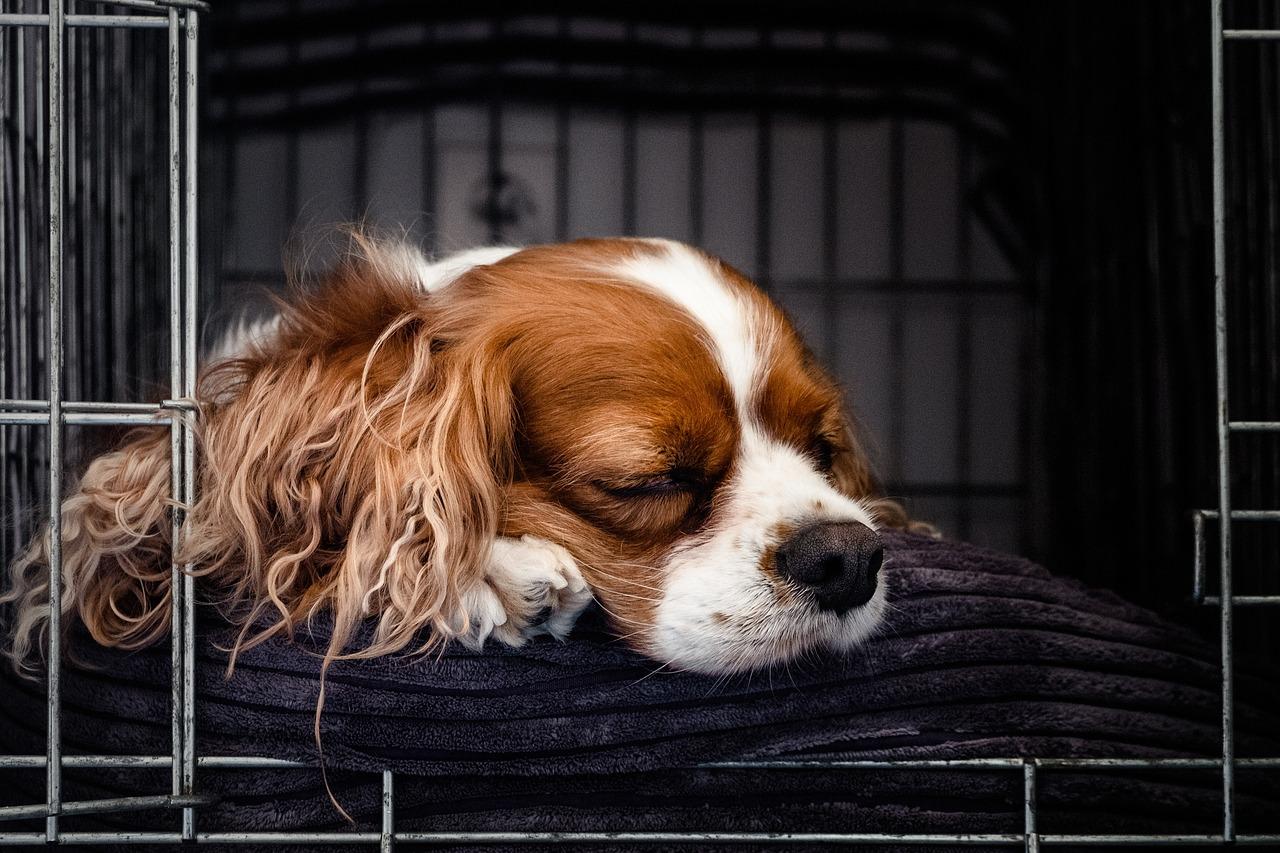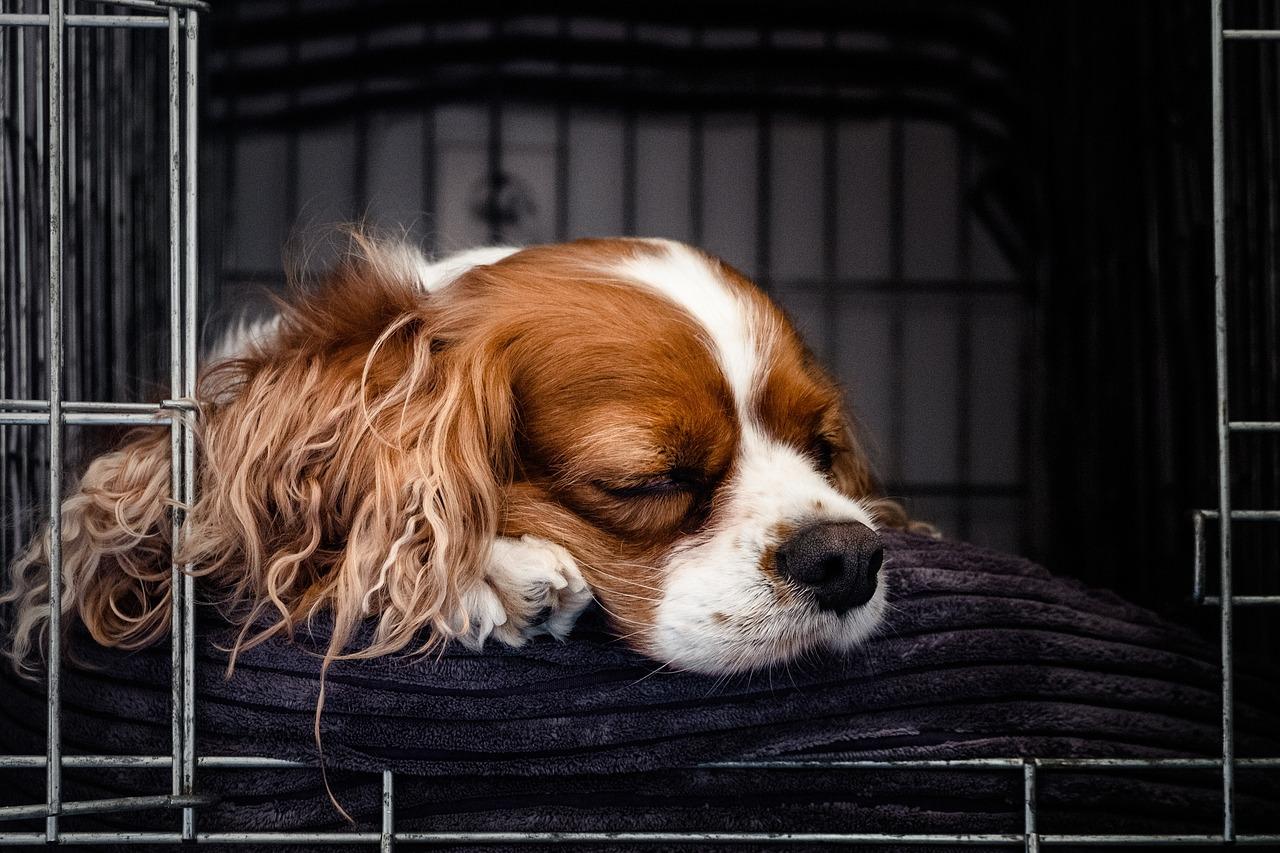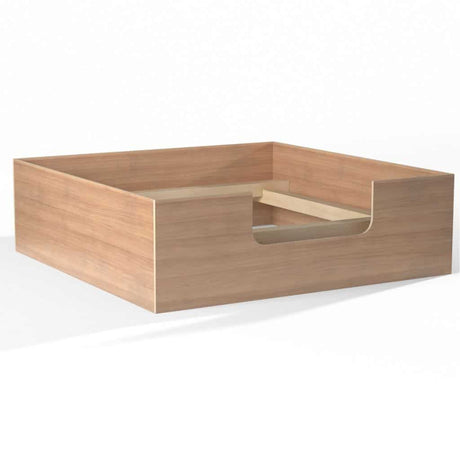You have to embrace a can-do attitude and give your dog the time and encouragement to realise and finally accept that crates are not bad, after all.
What Is Crate Training?
You may feel guilty about crate training your dog, especially if your pet is used to roaming around freely and starts to make pitiful sounds. But getting your dog familiar and comfortable inside a training dog cage can make all the difference, especially during emergencies.
To understand this process, crate training involves a slow and repetitive process of introducing and getting your dog used to being inside an indoor space, often inside a dog crate or dog kennel.
This is in no way a means of punishment for a dog; crate training intends to make your canine feel safe when in an enclosed area.
Crate training is necessary for dogs for many reasons. Here are just a few reasons to incorporate it into your dog's life.
- For a new puppy or dog, crate training is an excellent way to establish house rules and limit your pet's access to certain areas.
- Crates are the safest way to transport your dog, and this may be just for a vet visit or in case of emergencies when you and the rest of the family need to evacuate. Getting your dog used to the idea would make it less anxious.
- Crate training can be associated with a safe place for dogs or an exclusive space. This is especially so for senior dogs who can no longer take the unnecessary excitement of a busy household.
Crate training a dog takes plenty of time, effort, and patience. You need to set aside a significant amount of your time, so your dog can learn and understand the overall concept of being inside a limited space temporarily.
What Are The Benefits Of Crate Training?
Crate training can be a necessity. Although not all dog owners agree with the idea of their pets being enclosed in a limited space, this training can be advantageous for owners and their dogs.
Is create training cruel?
No, it's not. Tough love is a better term because sometimes, as an owner, you'll have to make decisions for your dog with their best interest in mind.
1. Crate Training Can Save Your Dog’s Life.
Knowing how to get a dog in a crate can make emergencies more manageable. For example, if there's a fire or an evacuation that needs to happen, knowing where your dog is amidst the chaos can bring you immense relief as an owner.
Being in the crate can also save your pet's life because you won't have to worry about where your dog might have gotten lost. If you know where the crate is, you know where your dog is.
Even outside of disasters, crate training can save your dog's life, especially if it has destructive behavior. Instead of worrying about your dog ingesting something that it's not supposed to when you are not home, you can put your dog inside the crate until you return.
As a bonus, crate training will save you hundreds of dollars in ruined couches and carpets. But if your dog loves to destroy things outdoors, you may want to partner crate training with how to stop a dog from digging.
2. Crate Training Gives Your Dog Its Own Space.
Sure, your bed might be what you'd call an ideal space, but every once in a while, your dog needs a place where it can retreat and nap peacefully. This is especially true for puppies who are naturally curious, energetic, and need lots of sleep.
Crate training your pup would let your pet understand that if it needs some quiet time, it can go inside its crate.
If there's always too much going on at home, crate training is a good idea to save your dog from unfamiliar faces and rowdy children, and let your pet have peace.
And when visitors come, you don't have to stress over your dog barking at every new guest or jumping up on them.
3. Crate Training Can Ease Your Dog’s Separation Anxiety.
Dogs would love to spend every minute with you, and on days you need to leave home, you may experience disagreements with your neighbors because of your dog's barking.
This is owing to separation anxiety. Crate training, when introduced at an early age, can help reduce this behavior. You can start practicing by setting the crate to a spot where your dog can still see you, then eventually moving the crate to another room. This way, your dog won't freak out if you are not home.
4. Crate Training Makes Vet Visits More Manageable
Vet visits are necessary but can be a stressful experience for your dog. Being able to transport them safely in a crate can help you and your dog have a better experience on your vet trips.
At times when your vet may need your dog to undergo a medical procedure, recovery would entail limiting movement and staying in a crate. If your dog is already familiar with staying in crates, their recovery time can be faster and hassle-free for everyone.
How To Teach Your Dog To Love The Crate
Introduce your pup to crate training as soon as it gets home.
The crate training process can take weeks or months, based on your dog's temperament, age, learning curve, and experiences.
Whether you're wondering how to get a puppy used to a crate or how to crate train a one-year-old dog, you must ensure it thinks of the crate as a happy place.
Associating the crate with something pleasant like treats and positive reinforcement is necessary, as is letting your dog learn at its own pace.
Here are the steps to help your dog find comfort and security inside a crate.
1. Make Proper Introductions
Set the crate in your family room or an area in your house where most of you spend time. How to make a dog crate more comfortable? Place a blanket or towel and one of your dog's favorite toys inside.
Whether or not your dog has ever used a crate before, you should always leave the door open.
Let your dog sniff and explore the crate, and encourage your pet to enter the crate by leaving a trail of treats.
Remember that it’s alright if your dog just observes the crate and doesn’t attempt to go inside or even near the crate. Prodding your dog to go inside may take an hour to weeks.
2. Set Meal Times And Treats Inside Or Near The Crate
Once your dog is visually familiar with the crate, begin setting its meals near it. This gesture would help your dog associate meals with the crate.
If your dog has been comfortable going in and out of the crate, put its bowl inside the crate. If your dog still shows signs of anxiousness, you can leave the food bowl as near as possible to where your dog will go without being fearful.
Over time, place the meals nearer the crate until you get to the point where your dog is feeding inside and at the back of the crate.
3. Condition Your Dog To Stay Inside The Crate
Don't do this if your dog is still showing signs of anxiousness or is not going in and out of the crate at its own will. But if your dog is ready, start confining it inside the crate.
Always make sure that your dog goes inside the crate willingly.
Teach your dog a command like "Inside" or "Kennel up," and when your dog enters the crate, give a treat and words of praise.
Then, close the door, but be in the same room as your dog. Talk to your dog reassuringly, and after 10 minutes, let your dog out. Do this several times a day until you shift to another room and increase the length of time that your dog is inside the crate.
If your dog is alright after short periods, you can leave it alone in the crate.
Leaving Your Dog Home Alone In A Crate
You can test your dog's comfort level by acting like you're leaving the house but still staying within your property, so you'd know if your dog starts making noises. From here, you'd know if your dog is ready to be left alone or if you need to condition it further.
Your dog mustn't associate the crate with being left alone. Never leave your dog alone in the crate for more than five hours at a time. Additionally, make goodbyes and arrivals low-key.
Crating Your Dog During Night Time.
Now, here's how to crate train a dog at night. Set your dog's crate near your bedroom or in the nearest hallway, especially if your pet is still a puppy. Note that younger dogs would need to go out at least once during the night, so you need to be able to hear your puppy when it whines.
Even if your dog is already an adult but still learning and getting comfortable with crate training, set their crate near you so they don't relate the activity to isolation. When your dog can go through the night comfortably inside the crate, you can gradually move it to your preferred location.
Conclusion
Crate training a dog is a huge accomplishment for you as a dog parent, and your dog may not realise it, but it is an excellent and life-saving skill that all dogs should know.
Will your dog love its crate for sure? Probably not because all dogs love their freedom, but if it feels secure, at peace, and comfortable, it's as good as it can get.



